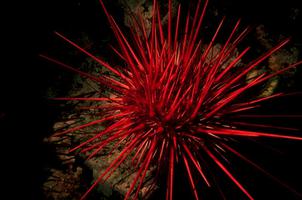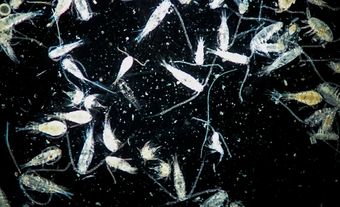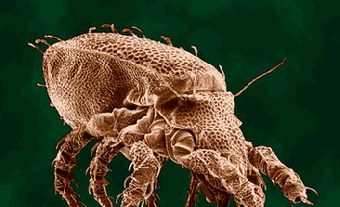
Sea Urchin, radially symmetrical marine invertebrate. Sea urchins and near relatives, the sand dollars and heart urchins, belong to class Echinoidea of phylum Echinodermata about 900 species are known worldwide. A characteristic external covering of movable spines serves for protection and locomotion. In some tropical forms, spines can be 30 cm long and, being poisonous, can inflict painful wounds on swimmers. The body wall contains an internal skeleton that gives characteristic shapes: sea urchins, spherical; heart urchins, heart-shaped; sand dollars, flattened discs. Sea urchins have the mouth on the undersurface and the anus directed upwards. Usually, 5 double rows of tube feet encircle the body. These are the principal means of locomotion and attachment. Like other echinoderms, sea urchins have a water-vascular system to operate tube feet. Pedicellariae (small, pincerlike appendages) cover the body surface at the base of spines. These often have a poison sac with a hypodermiclike fang, used to deter predators. Sea urchins are common in Canada, intertidally and subtidally. They are usually associated with rocky bottoms. They feed on algae. In some countries they are harvested for eggs, eaten like caviar.

 Share on Facebook
Share on Facebook Share on X
Share on X Share by Email
Share by Email Share on Google Classroom
Share on Google Classroom



